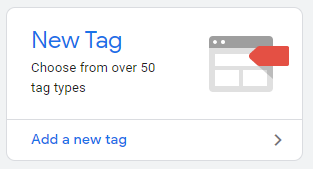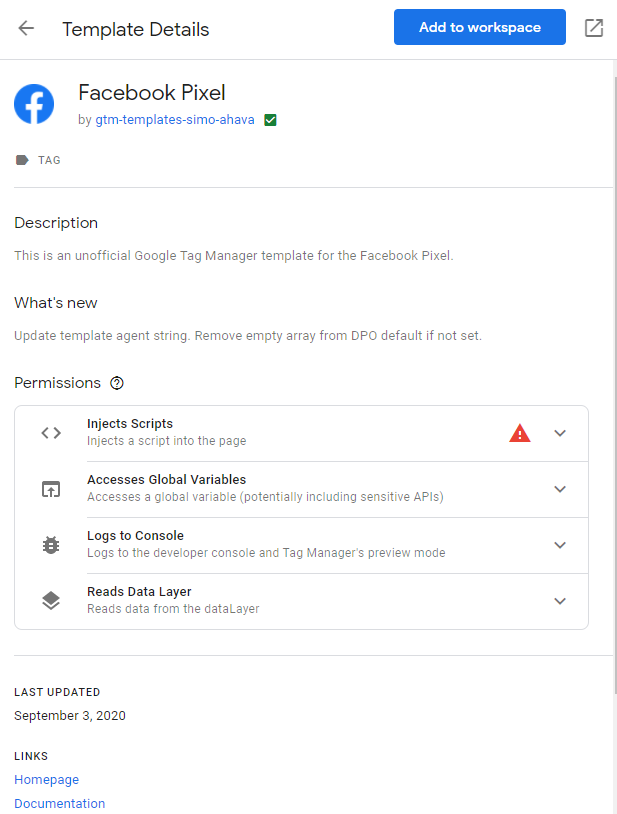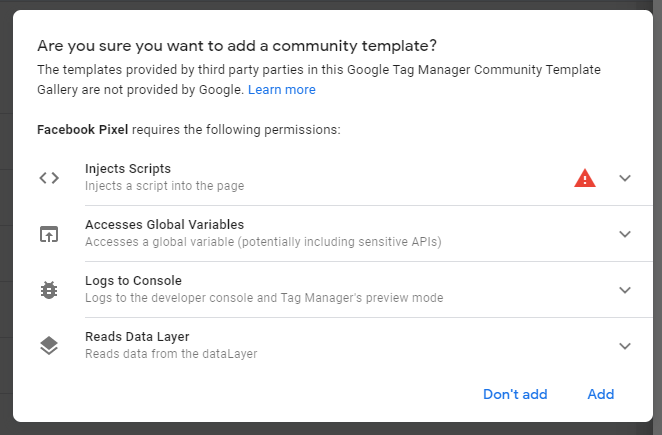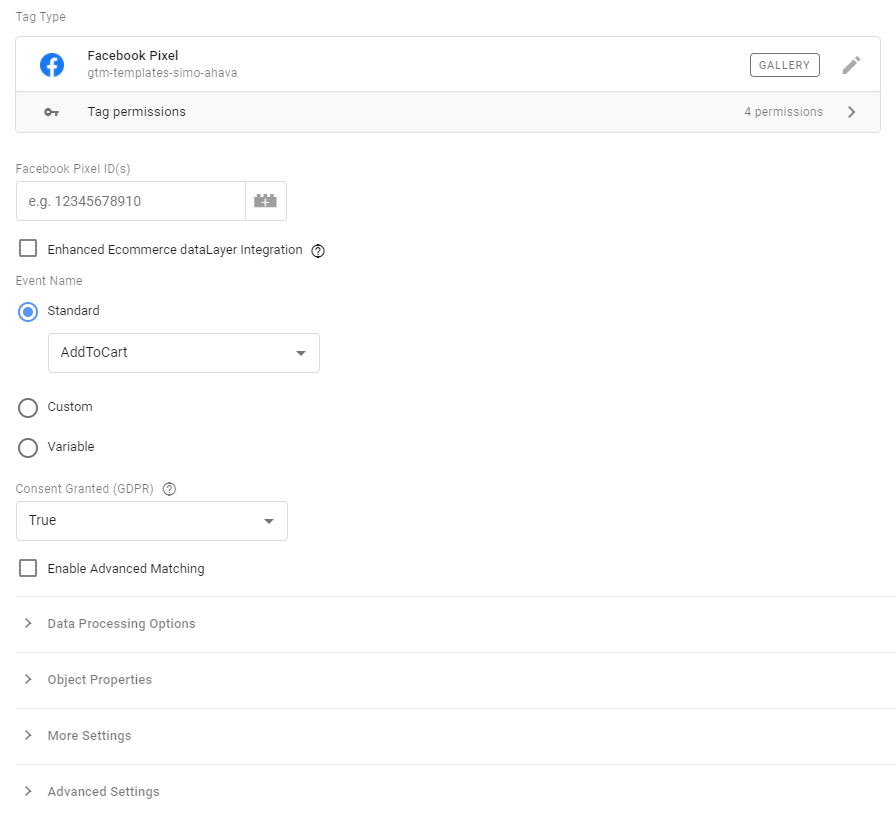Google Tag Manager is an essential tool for any website. It makes analytics tag management easy…as long as your tag is supported by Google. While Google does support tags that tie into its own systems (Google Analytics, Google Ads, etc.), you may be out of luck if you need to install a tag from a platform outside of Google’s ecosystem. Many popular platforms, such as Facebook, Commission Junction, Reddit, ChannelAdvisor, Snapchat, and TikTok do not have native support for pixel installation and event tracking in Google Tag Manager.
Fortunately, there’s a dedicated community of Google Tag Manager users that have a solution. They have coded pre-configured tags for Google Tag Manager, and you can install them easily from your Google Tag Manager interface. This collection of tags is called the Community Template Gallery. Using a tag from the gallery can save a lot of time compared to creating your own tags, plus you get the advantage of using a tag that has already been tested and accepted by a broad user base.
Accessing the Community Template Gallery
If you just want to browse the community templates to see which ones are a good fit, you can directly access the gallery at https://tagmanager.google.com/gallery/. If you’re ready to start installing a tag, you can do so directly within your Google Tag Manager interface. Just follow these instructions:
- Log in to your Google Tag Manager workspace.
- Add a new tag

- Click on the Tag Configuration area to select a tag type

- At the top of the tag type options, look for the link to “Discover more tag types in the Community Template Gallery”

- Browse the list or use the search function to find the tag that you need to install.
Installing a Tag From The Gallery
Once you have found the tag you need to install, it’s a simple process to install it. Settings and permissions vary by tag, but the installation process is very similar for all tags. Let’s walk through one of the most needed tags, the Facebook Pixel, as an example of the process.
- Select “Facebook Pixel” from the list of Community Templates:

- The next tab will give you a description of the tag, information on updates, and a list of permissions that the tag will need to use. If you’re agreeable with all the requirements, click the “Add To Workspace” button.

- Google will request that you confirm your selection one more time after reviewing the required permissions. Click “Add” when you’re ready.

- Once you’ve added the template to your account, you can configure it. This particular tag template allows you to set up several different kinds of Facebook event tags, such as page views, Add to Cart, Purchase, Donate, Subscribe, and much more.

- There are a few options you’ll need to set up regardless of which event type you chose. You’ll need to enter your Facebook Pixel ID, which you can find in your Facebook Ads account. If you are using the Google Analytics Enhanced Ecommerce data layer, select the checkbox in the setup options. Choose the event name that corresponds to the action that you want to track.
- The rest of the options are more advanced, but not always necessary to set up.
- Once you have configured your options, set up an event trigger that corresponds to the action you want to track. For more information on event triggers in Google Tag Manager, check out this article.
- Save your tag configuration.
- In your Workspace screen, click the Submit button to deploy your tag change to your site, and you’re done!
Add a Tag To The Community Template Gallery
If you really enjoy the convenience of the tag templates and you want to give back to the community, you can create your own templates and submit them to Google. Instructions on how to create a custom template can be found here. Once you’ve created your template, you can submit it to Google for approval. Make sure that any templates you create follow Google’s style guide for Google Tag Manager templates.
Conclusion
Google’s Community Template Gallery saves a lot of time and effort when you need to install third-party pixels in Google Tag Manager. Not all systems are supported, but the number of community tags is growing every day. Before you try to set up your own tags for third-party tools, be sure to check out the Community Template Gallery to see if someone has already done the work for you.

 RSMUS.com
RSMUS.com





